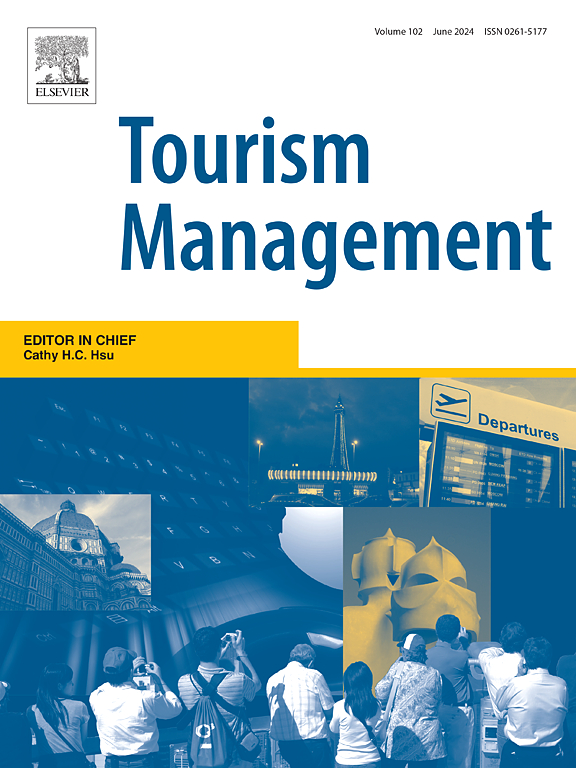从词汇到增长:从自然语言处理揭示政府对旅游业的关注
IF 12.4
1区 管理学
Q1 ENVIRONMENTAL STUDIES
引用次数: 0
摘要
本文利用人工智能驱动的跨学科方法分析政府政策组合,对政府对旅游业的关注进行了理论化和量化。通过利用机器学习和自然语言处理技术,包括文本分析、词嵌入和基于gpt - 40的分割,GAT指标来源于政府年度报告。在推广竞赛模型和有限注意力分配理论的框架下,采用后双选LASSO方法,确定了a级景区数量、男性市委书记和城市经济约束对GAT影响的关键前因。这些因素共同决定了政府在旅游政策中的资源配置。验证检验证实了服务贸易总协定与政府在旅游相关领域的实际投入之间的正相关关系。当政府言行一致时,GAT可以作为预测旅游业增长的补充指标。鲁棒性检查验证了这些发现,提供了可靠的方法。这项研究提供了一个全面的技术路线图,指导未来的旅游研究与人工智能驱动的方法。本文章由计算机程序翻译,如有差异,请以英文原文为准。

From words to growth: Unveiling government attention to tourism from natural language processing
This paper theorizes and quantifies the government attention to tourism (GAT) using an AI-driven interdisciplinary approach to analyze government policy portfolios. By leveraging machine learning and natural language processing techniques, including textual analysis, word embeddings, and GPT-4o-based segmentation, the GAT indicator is derived from government annual reports. Within the framework of promotion tournament model and limited attention allocation theories, the study uses post-double-selection LASSO to identify key antecedents of GAT: the number of A-level scenic spots, male municipal party secretaries, and cities' economic constraints. These factors collectively shape government resource allocation in tourism policy. Validation tests confirm a positive association between GAT and actual government inputs in tourism-related domains. When governments' words align with actions, GAT can be a supplementary indicator for forecasting tourism growth. Robustness checks validate these findings, providing a reliable methodology. This study offers a comprehensive technology roadmap, guiding future tourism research with AI-driven approaches.
求助全文
通过发布文献求助,成功后即可免费获取论文全文。
去求助
来源期刊

Tourism Management
Multiple-
CiteScore
24.10
自引率
7.90%
发文量
190
审稿时长
45 days
期刊介绍:
Tourism Management, the preeminent scholarly journal, concentrates on the comprehensive management aspects, encompassing planning and policy, within the realm of travel and tourism. Adopting an interdisciplinary perspective, the journal delves into international, national, and regional tourism, addressing various management challenges. Its content mirrors this integrative approach, featuring primary research articles, progress in tourism research, case studies, research notes, discussions on current issues, and book reviews. Emphasizing scholarly rigor, all published papers are expected to contribute to theoretical and/or methodological advancements while offering specific insights relevant to tourism management and policy.
 求助内容:
求助内容: 应助结果提醒方式:
应助结果提醒方式:


